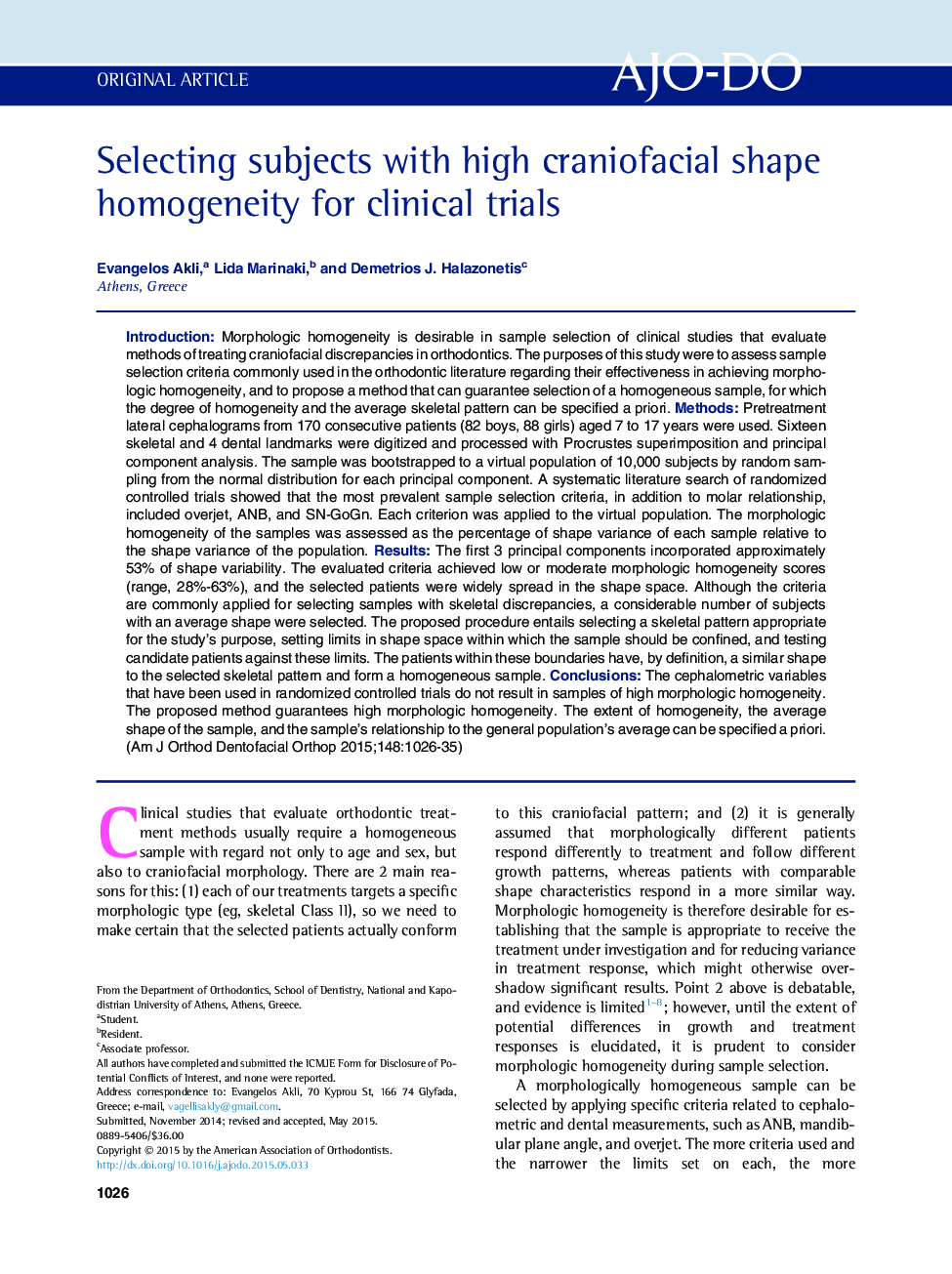| کد مقاله | کد نشریه | سال انتشار | مقاله انگلیسی | نسخه تمام متن |
|---|---|---|---|---|
| 3115270 | 1582681 | 2015 | 10 صفحه PDF | دانلود رایگان |
• We evaluated sample selection criteria of randomized controlled trials in orthodontics.
• Conventional cephalometrics failed to select morphologically homogeneous samples.
• Geometric morphometrics guarantees samples of high morphologic homogeneity.
• The proposed method can predetermine homogeneity and average shape of the sample.
IntroductionMorphologic homogeneity is desirable in sample selection of clinical studies that evaluate methods of treating craniofacial discrepancies in orthodontics. The purposes of this study were to assess sample selection criteria commonly used in the orthodontic literature regarding their effectiveness in achieving morphologic homogeneity, and to propose a method that can guarantee selection of a homogeneous sample, for which the degree of homogeneity and the average skeletal pattern can be specified a priori.MethodsPretreatment lateral cephalograms from 170 consecutive patients (82 boys, 88 girls) aged 7 to 17 years were used. Sixteen skeletal and 4 dental landmarks were digitized and processed with Procrustes superimposition and principal component analysis. The sample was bootstrapped to a virtual population of 10,000 subjects by random sampling from the normal distribution for each principal component. A systematic literature search of randomized controlled trials showed that the most prevalent sample selection criteria, in addition to molar relationship, included overjet, ANB, and SN-GoGn. Each criterion was applied to the virtual population. The morphologic homogeneity of the samples was assessed as the percentage of shape variance of each sample relative to the shape variance of the population.ResultsThe first 3 principal components incorporated approximately 53% of shape variability. The evaluated criteria achieved low or moderate morphologic homogeneity scores (range, 28%-63%), and the selected patients were widely spread in the shape space. Although the criteria are commonly applied for selecting samples with skeletal discrepancies, a considerable number of subjects with an average shape were selected. The proposed procedure entails selecting a skeletal pattern appropriate for the study’s purpose, setting limits in shape space within which the sample should be confined, and testing candidate patients against these limits. The patients within these boundaries have, by definition, a similar shape to the selected skeletal pattern and form a homogeneous sample.ConclusionsThe cephalometric variables that have been used in randomized controlled trials do not result in samples of high morphologic homogeneity. The proposed method guarantees high morphologic homogeneity. The extent of homogeneity, the average shape of the sample, and the sample’s relationship to the general population’s average can be specified a priori.
Journal: American Journal of Orthodontics and Dentofacial Orthopedics - Volume 148, Issue 6, December 2015, Pages 1026–1035
